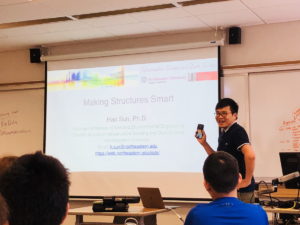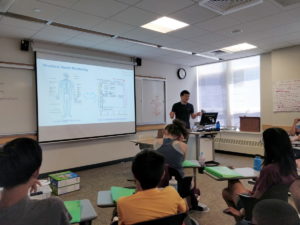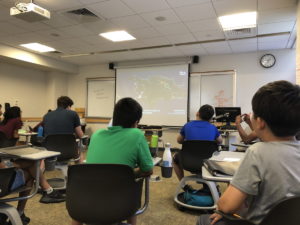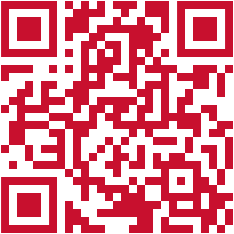 On Monday, July 15th, students in the NU Summer STEM program learned about Big Data, what it is, how it can be used, and the potential dangers of it. Using their knowledge of big data, the students had their chance to analyze some big data: 5 years of weather data from the Blue Hills Observatory. The students were tasked with picking out the most important information and sharing with the class.
On Monday, July 15th, students in the NU Summer STEM program learned about Big Data, what it is, how it can be used, and the potential dangers of it. Using their knowledge of big data, the students had their chance to analyze some big data: 5 years of weather data from the Blue Hills Observatory. The students were tasked with picking out the most important information and sharing with the class.
After lunch, Professor Hao Sun (CEE) visited to talk to the students about a real-world/Northeastern research use of big data: using sensors embedded in and around buildings to make them “smart.” Students were first asked to indicate what they thought it means for an object to be smart, such as a smart phone. The general consensus was that to be considered a smart object, it must be able to sense it’s environment and then potentially react to what it senses. [I (Nick) was surprised to find out that smartphones can have over 100 sensors in them – I would have guessed maybe 10!] By putting sensors within and around structures (such as buildings or bridges), a normal “dumb” structure can be made “smart”, which allows the structure to sense changes and react to them, either just by alerting us (humans), or by actively doing something. For example, a building can react to light levels to rise or lower shades (or in a more advanced building, to increase or decrease the tint levels of windows). Professor Sun also showed us an example of his research, in which he visualized how the structure of a bridge surface reacts to cars/trucks driving over them, scaling up from an imperceptible deflection to a visible-to-the-human-eye change.
- Professor Sun talks about how modern “Smart” buildings are monitored to assess their structural health.
- Buildings can be monitored in reaction to events, such as natural disasters, to ensure their safety




